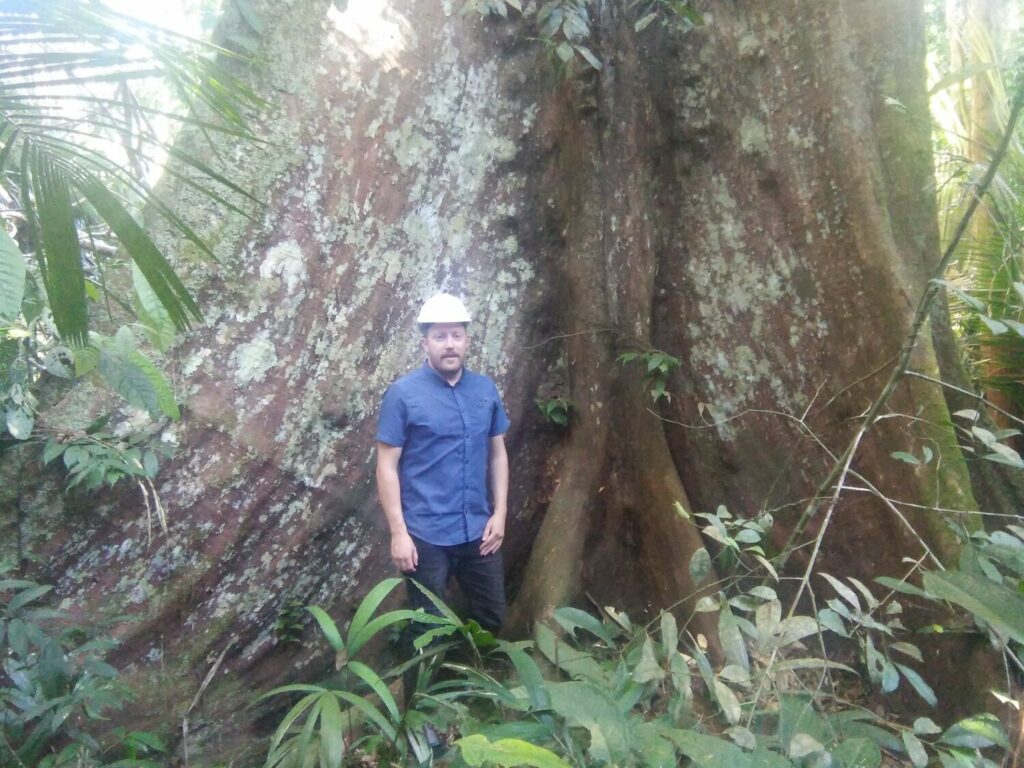By Ken Hickson for Focus on Forests
How can importers manage the risks associated with getting timber products from the Amazon?
We hear a lot about the damage to the Amazon – the largest rainforest resource in the world – from deforestation, illegal logging and out of control forest fires. But little is said about the legitimate trade in timber from Brazil to the United States and other markets.
So how is it possible for exporters and importers to manage the risks associated with international timber trade?
At a minimum, they have to demonstrate compliance with national and international laws – such as the US Lacey Act and EU Timber Regulation – which are designed to restrict trade in illegal, environmentally-damaging timber products.
Increasingly, companies in the timber supply chain need to meet sustainable forestry, as well as human rights standards, supporting UN Sustainable Development Goals.
Talk to Max Horowitz-Burdick, based in Denver, Colorado and you get a very good idea of what’s possible when it comes to managing the timber supply chain from Brazil to the US.
As Director for the Americas for Double Helix Tracking Technologies, he gets intimately involved in the process of tracking and tracing product from timber mill to hardware stores.
Companies call on Max and DoubleHelix to provide unique on-the-ground expertise.
Currently, he’s working closely with a timber mill in the north western Brazilian state of Acre – perhaps best known as the origin of the rubber latex plants – but now relying much more on timber and wood products for its export industry.
This particular mill can be relied on to source its timber material from legally and responsibly managed forest concessions. Max and other members of his team have been to visit the mill and the forests to be absolutely certain.
“Our clients rely on us to unlock supply chain data at source and maintain constructive relationships along the supply chain.” Max says
That means, literally, speaking the same language. Whether that’s a sawmill operator in Brazil or a timber supplier in Indonesia, the Congo or Russia.
More than that, understanding cultural differences and business practices. Building understanding and trust – as a respected third party – makes it easier for suppliers to share information to verify the source, while at the same time maintaining confidentiality. That’s very important to Max and his team.
It’s important for DoubleHelix to have access to, as well as fully assess, all manufacturing and forest sites that are involved in any timber shipment. That means having up-to-date knowledge of both the buyer-side regulatory requirements and the country-level legality rules.

Only by fully understanding local methods and national rules, can DoubleHelix then decide what tools to utilise. By being on the spot, Max can conduct on-site inspections to supplement desk-based assessments to determine legal compliance, product traceability and raw material sourcing practices.
He can also recommend what additional steps are required to mitigate risk, like scientific testing, document checks, and, if required, help suppliers modify their raw material supply.
Where companies need a reliable partner for large-scale projects that aim to secure timber supply chains and promote responsible sourcing, he has some very useful solutions.
DoubleHelix might be best known for introducing DNA and isotope testing of wood samples to verify exactly where they’ve come from and while Max can definitely draw on these scientific methods, a large part of his work involves the determined checking of documentation to carefully track the movement of timber from forest to mill and then on to the importer in the US.
“We then apply technology solutions such as Sourcemap to help us map timber supply chains, enabling complete traceability and transparency,” Max says.
As a result, the importer and the exporter can be absolutely certain of where the wood is coming from, because DoubleHelix has thorough documentation verification processes and traceability measures in place.
He is quick to affirm the philosophy of DoubleHelix, which is to show it not only cares about conservation of tropical forests, but it’s determined to help those companies who want to be responsible by only sourcing timber products from sustainably managed and certified forests.
“We want everyone to care about where their wood products come from, as much as we do, because it’s so important to our future,” Max affirms.
Max is part of the DoubleHelix team of in-house experts and network of associates, extending beyond North and South America, to Europe, Australia, Africa and Asia.
“Having a local and national presence enables us to deliver our services at competitive rates, so price is not a barrier to achieving goals for our clients, where-ever they are in the timber supply chain,” he says.
Max is quick to remind clients and others that DoubleHelix has a history of working in the US since 2013.
That’s when the United States Forest Service (USFS) enlisted the help of DoubleHelix to build a DNA profiling reference database that would enable experts to match seized logs to the stumps of illegally harvested bigleaf maple trees in the Gifford Pinchot National Forest.
With help from World Resources Institute (WRI), DoubleHelix and the University of Adelaide (in Australia) teamed up with USFS to develop the first genetic reference database for Bigleaf Maple, mapping out genetic variations across a subset of this species’ natural range in the Pacific Northwest.
Catching the perpetrators of forest crime is still important, but for Max and the DoubleHelix team around the world, there’s even more emphasis now on prevention.
Both by helping to avoid the destruction of natural forests and by introducing measures to help companies, at both ends of the timber supply chain, to abide by the rules of international timber trade.
At its Singapore headquarters, DoubleHelix coordinates and manages its global industry network and often brings timber supply chain partners together, wherever they are in the world. It also uses its scientific and technology network to identify opportunities to build new verification capabilities.
Max is always ready to tell clients in the US and elsewhere, that DoubleHelix exists to help them build supply chain resilience.
He will refer them to a crucial message from DoubleHelix, which has become even more relevant with the global pandemic, when there are so many more barriers to international travel and trade:
“It’s what you don’t know that can hurt you the most. More companies are realising that better knowledge of their supply chains is critical to business continuity and their own sustainability.”
For more on Double Helix Tracking Technologies and how it helps to manage the legal and sustainable trade in timber products, go to www.doublehelixtracking.com.


